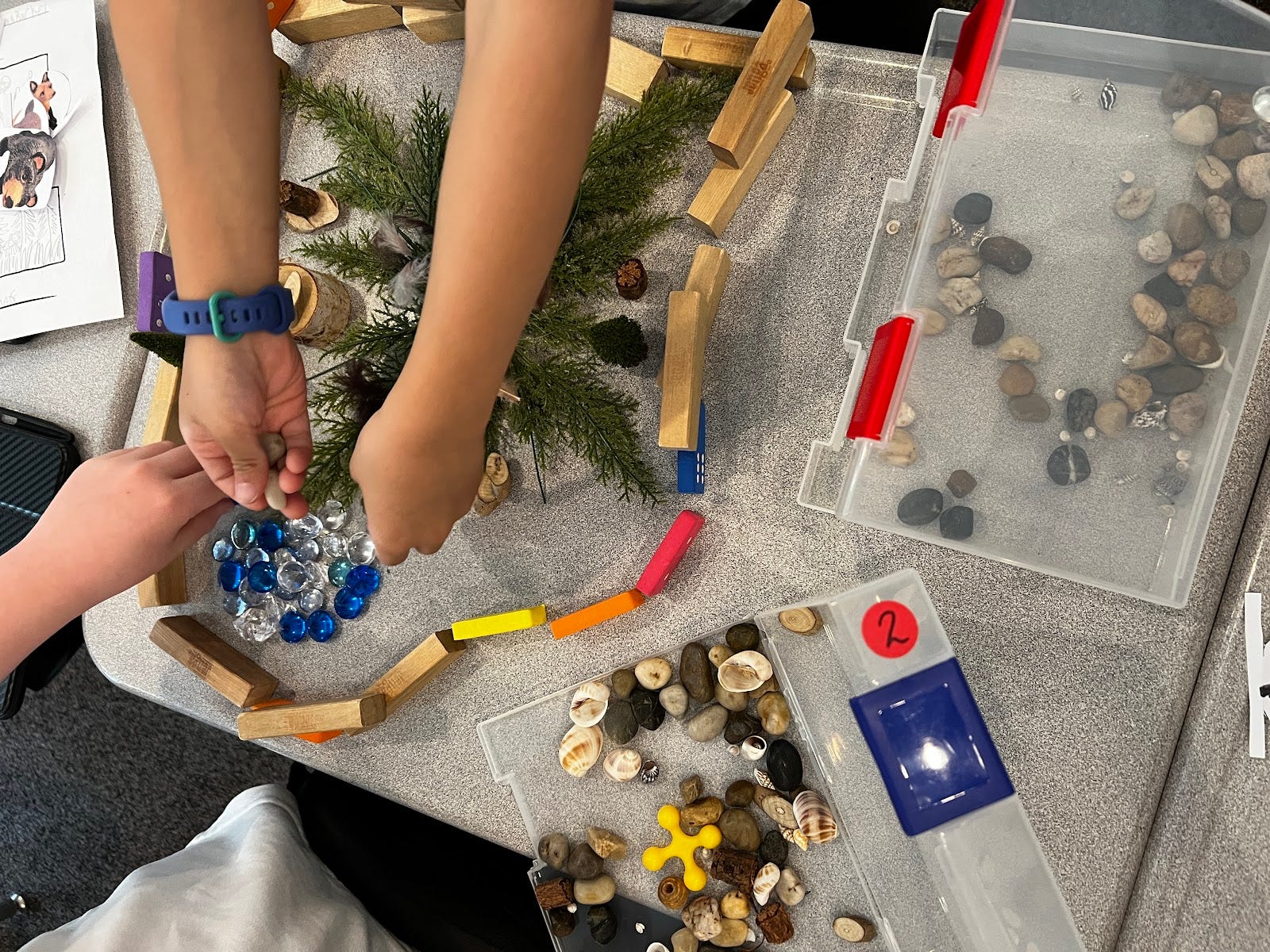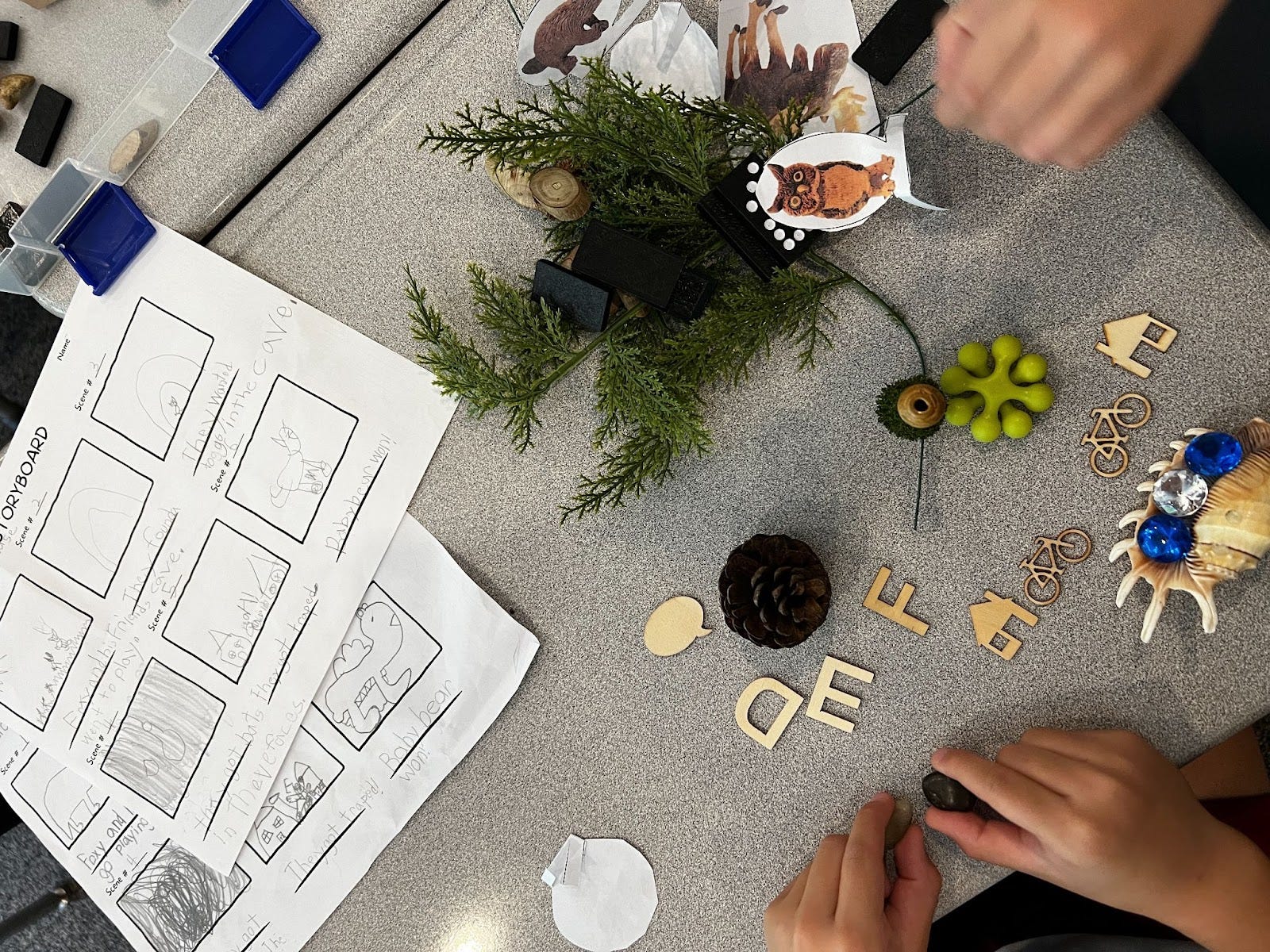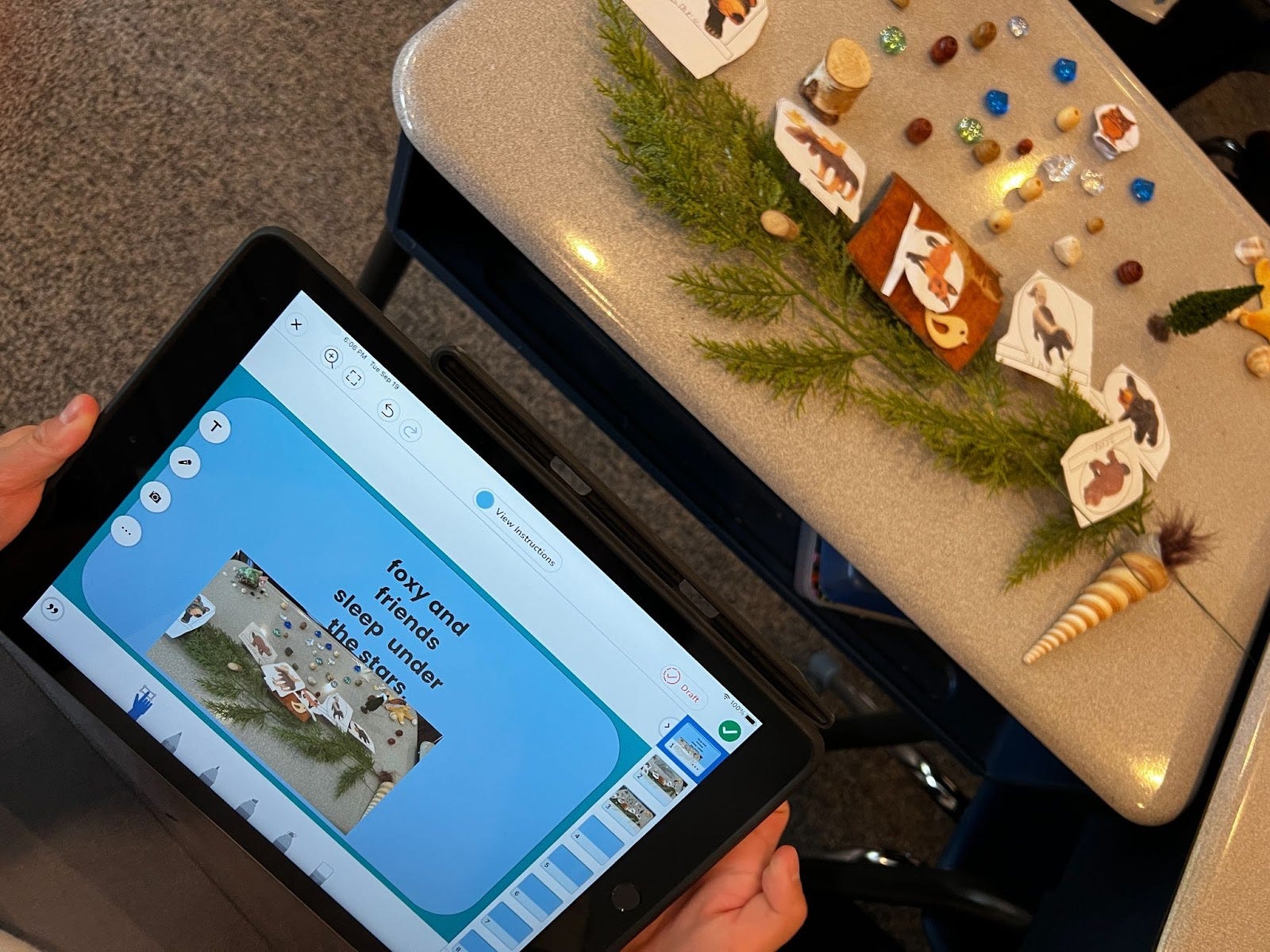An awesome project in September!? Read to the end for an indigenous storytelling resource.
What a fun time in Diane's class! It's only the third week of September, but believe it or not, I've been able to be a part of this classroom project since my first visit of the year. I don't want to hear any more excuses from other teachers about the first couple of months of school being too crazy to involve us in any kind of tech projects! Just kidding… sorta 😉
Here’s a timeline of how we co-planned a Seesaw Storybook project in Grade 2:
Week 1️⃣
Diane and I first discussed what we should use to create storybooks with her class. I asked her a few questions to figure out what her goals were:
- How will the students learn about storytelling? They’ll be developing their stories through play. We have tubs of items (pinecones, wood blocks, miniature trees, marbles etc.) that they’ll spend time playing with to figure out what kind of story they’ll tell.
- What do you want your students to create? A digital storybook with 5-7 pages. Something easy to navigate that also has flexible creation tools.
- How involved do you want your students to be with the tech they’ll be using? As much as possible!

I thought Seesaw would be the best place to do this because her students were already familiar with the platform and were going to be using it a lot throughout the year. The planning started to come together and I left Diane and her class to develop the stories through play with her students.
Week 2️⃣
When I came back, I got to help the class storyboard their ideas. Diane provided a simple storyboard template to her students so they could outline their stories. To inspire her students, the class read Foxy and Friends and based their characters and stories on their world. We got some adorable stories like Foxy and Friends Have A Birthday Party on the Beach and Foxy and Friends Explore the Forest. CUTE! 😍

Week 3️⃣
Now that they had their story ideas down, it was time to recreate the scenes they developed during their play time and take pictures in Seesaw. In preparation for this, Diane had created a Seesaw assignment, with 10 slides to use as book pages and a basic background for each photo. As a class, they had practiced inserting a picture and text box in the Seesaw canvas, so the kids were already experts. I was just there for extra support while they all had an iPad in their hands!

I appreciated how open Diane was to trying new things with her students and her preparation between each class. This wouldn’t have happened without her dedication and planning. This project felt like it had everything we look for when designing great student experiences:
- Play! 🤹
- Hands-on learning ✋
- Scaffolding with storyboard templates and Seesaw activities 🏗️
- Purposeful technology use 📷
Inspired? 💡 Share this post with a fellow educator!
Celebrating Indigenous Picture Books
Are you interested in creating story books in your class? Here’s a great resource to connect your class with indigenous storytelling.

The Canadian branch of the International Board on Books for Young People (IBBY) Canada is pleased to present “From Sea to Sea to Sea: Celebrating Indigenous Picture Books.” 25 of the best Indigenous picture books published in Canada between 2020–2022 were selected for this 2023 Edition.

